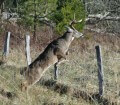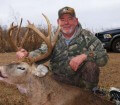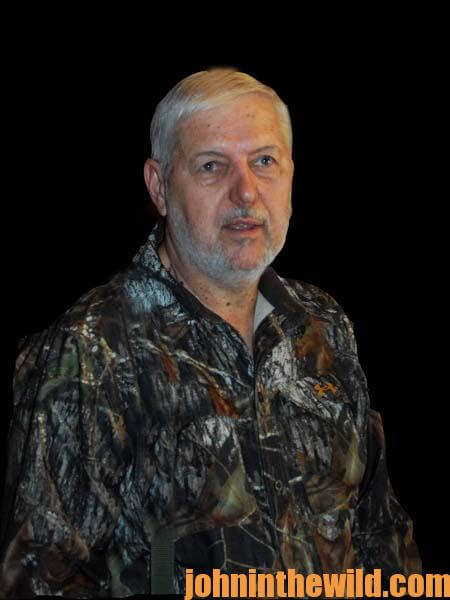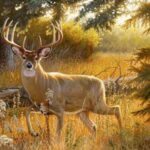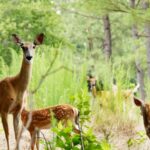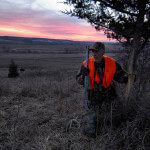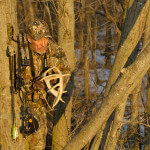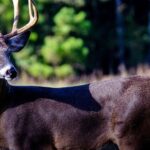John’s Note: Two ways of bagging a buck include luck, which is a factor that a majority of hunters in many areas depend on solely, and experience – knowing the deer, his movement patterns, his behavior patterns and what causes him to move from one place to another. Being able to predict deer movement is an important trait of the hunter who bags a buck year after year. Very-little guesswork is involved in this type of hunting. The sportsman takes a set of given facts, studies the terrain, the available food, the deer’s mating habits and the weather in his region, correlates them with deer sign he finds where he’s hunting and comes-up with a hunt plan that logically will put him in a position to see and hopefully bag a deer on any given day he hunts.
Actually the hunter’s mind is the ultimate weapon.
Like an onboard computer, an outdoorsman feeds in data, the information is processed between his ears and the answer of where the buck probably will show-up on any given day is fed out and put into the outgoing box of his intellect. Let’s look at the factors that are fed into a knowledgeable hunter’s brain and see how he comes-up with hunt plans that consistently pay-off in venison dinners.
To be a consistently-successful deer hunter, you must adopt the philosophy that scouting is far more important and critical to hunter success than shooting. The effective hunter will spend 80 percent of his time in the woods scouting and trying to determine where and when a deer should show-up and only 20 percent of his time in an attempt to take the deer. Less-knowledgeable hunters will spend 80 percent of their time wandering around in the woods or sitting on a tree stand, because they find a few deer tracks or some droppings there. Then these same men only will spend 20 percent of their time trying to predict where the deer will show-up. But according to an avid deer hunter, “The most-important deer tracks to the hunter are the ones the deer is standing in when the bowhunter is ready to shoot.” As evidence of this fact, in most sections of the country, you’ll find or know several consistent hunters who seem to always bag their bucks within the first 2 hours of the opening day of deer season. Although luck plays a role in their success, if you question them closely, you’ll learn that before the season has opened, they’ve spent days and weeks studying the deer, picking their stand sites and paying close attention to the details that result in successfully arrowing a buck.
Dr. Robert Sheppard of Tuscaloosa, Alabama, a bowhunting instructor at several bowhunting schools, says, “There are no shortcuts. To regularly take deer year after year, you have to spend more time scouting than you do trying to shoot a deer. There are three major times for scouting that will consistently pay-off in deer year after year for the hunter. These three scouting times are before the season, during the season and at the end of the season.”
To learn more about deer hunting, you can get John E. Phillips’ Kindle eBooks, “How to Hunt and Take Big Buck Deer on Small Properties,” (John’s latest book), “How to Hunt Deer Up Close: With Bows, Rifles, Muzzleloaders and Crossbows,” “PhD Whitetails: How to Hunt and Take the Smartest Deer on Any Property,” “How to Take Monster Bucks,” and “How to Hunt Deer Like a Pro,” or to prepare venison, get “Deer & Fixings.” Click here to get these books.
Share this page with a friend!
About the Author
John Phillips, winner of the 2012 Homer Circle Fishing Award for outstanding fishing writer by the American Sportfishing Association (ASA) and the Professional Outdoor Media Association (POMA), the 2008 Crossbow Communicator of the year and the 2007 Legendary Communicator chosen for induction into the National Fresh Water Hall of Fame, is a freelance writer (over 6,000 magazine articles for about 100 magazines and several thousand newspaper columns published), magazine editor, photographer for print media as well as industry catalogues (over 25,000 photos published), lecturer, outdoor consultant, marketing consultant, book author and daily internet content provider with an overview of the outdoors. Click here for more information and a list of all the books available from John E. Phillips.

